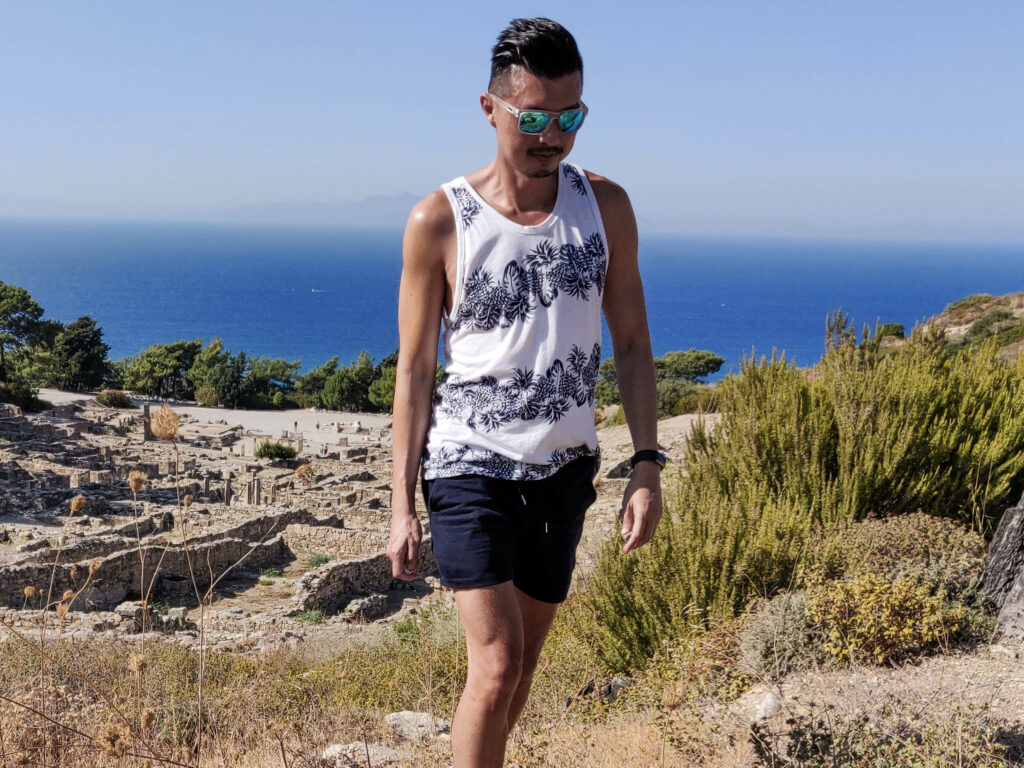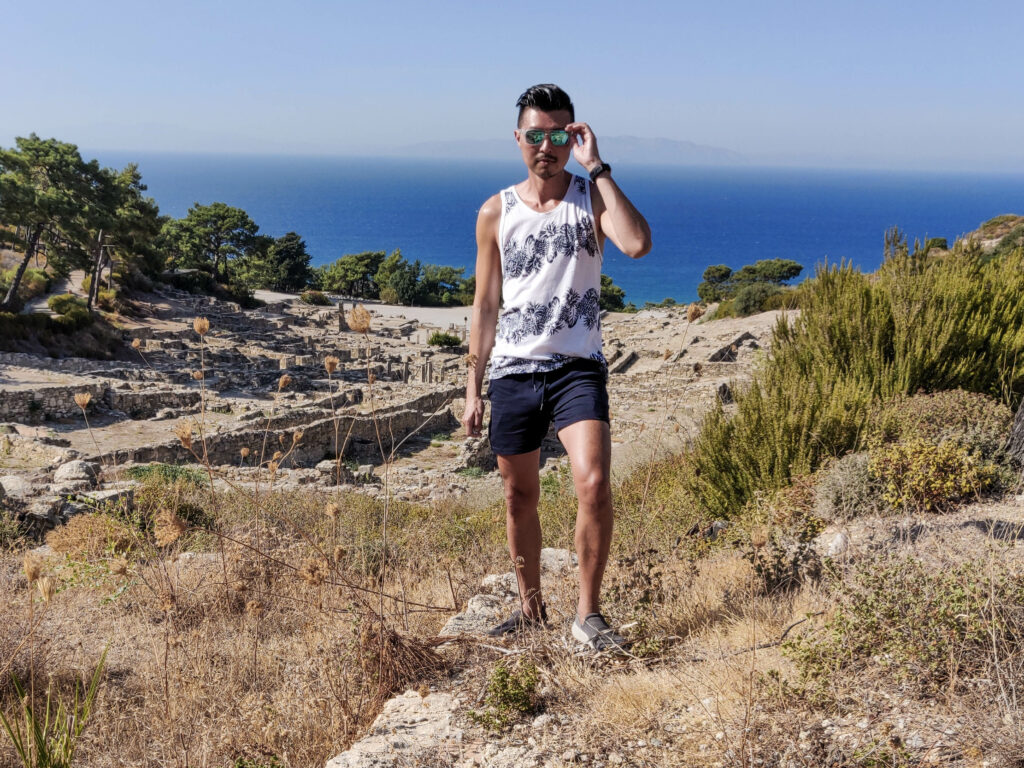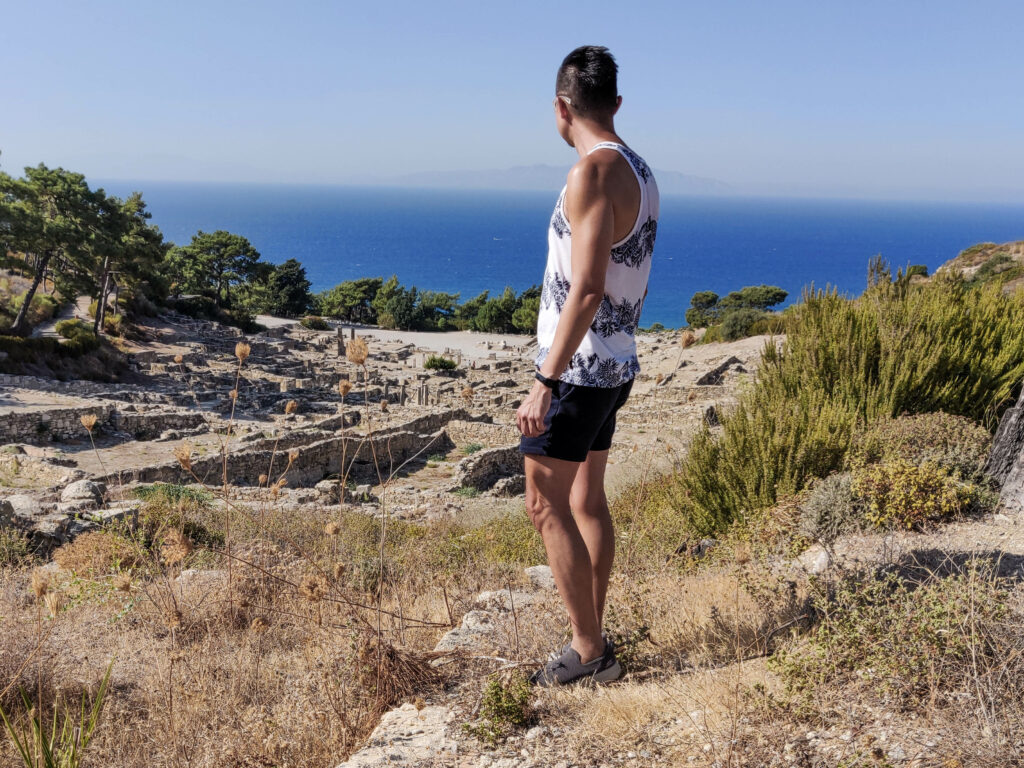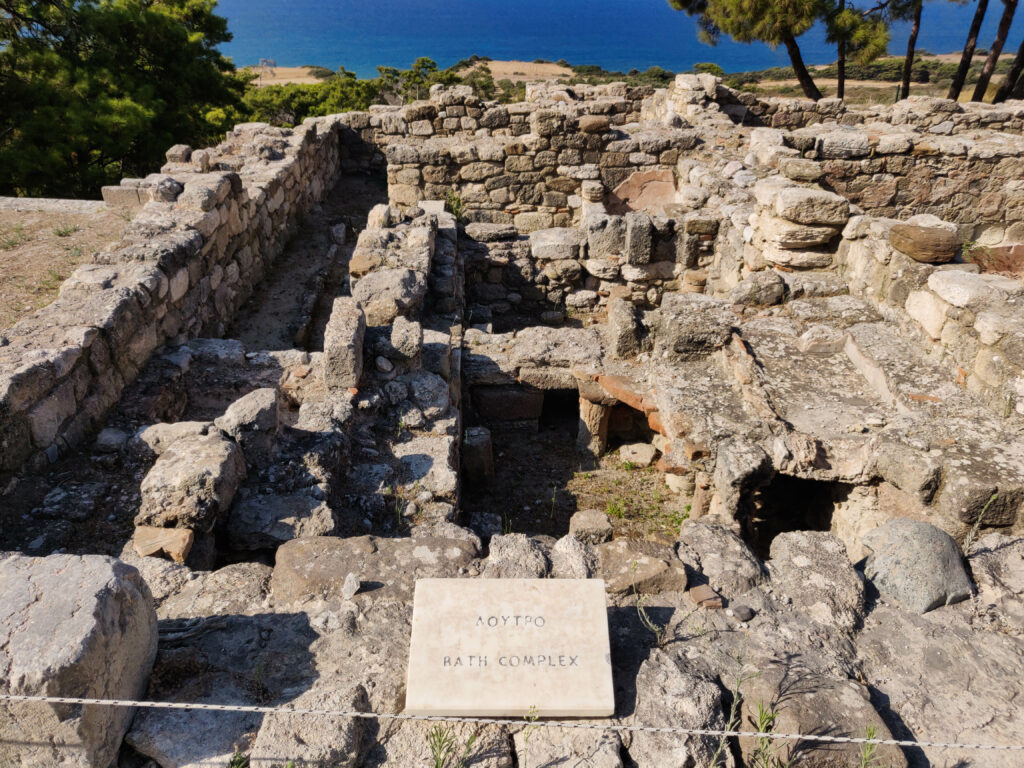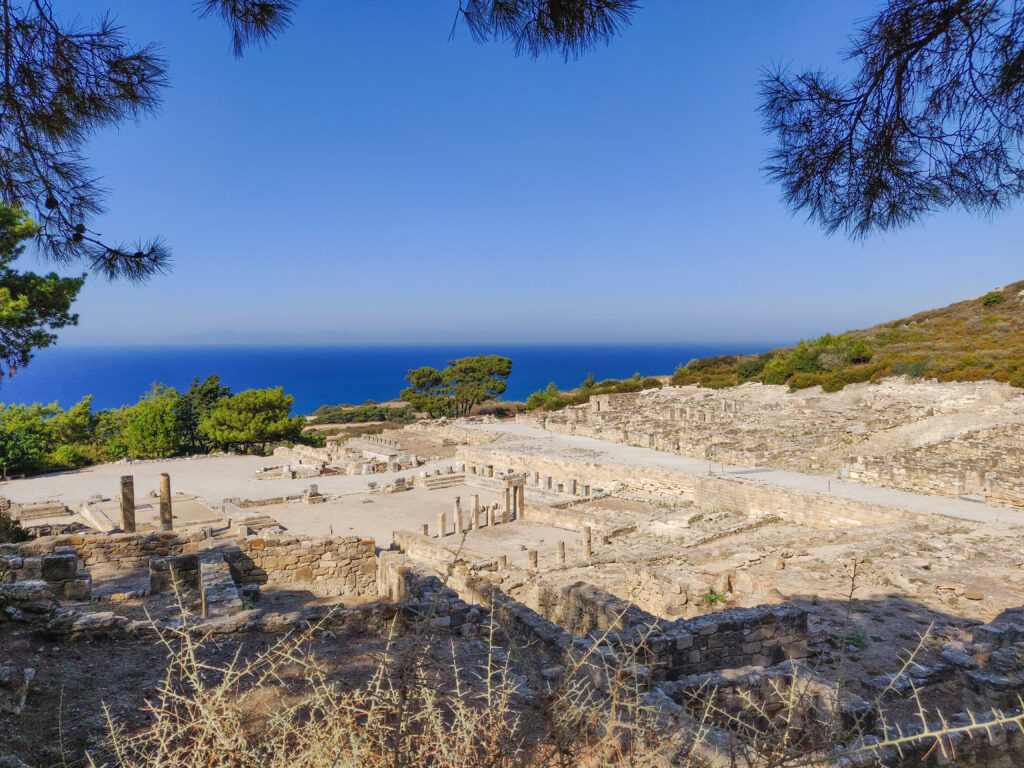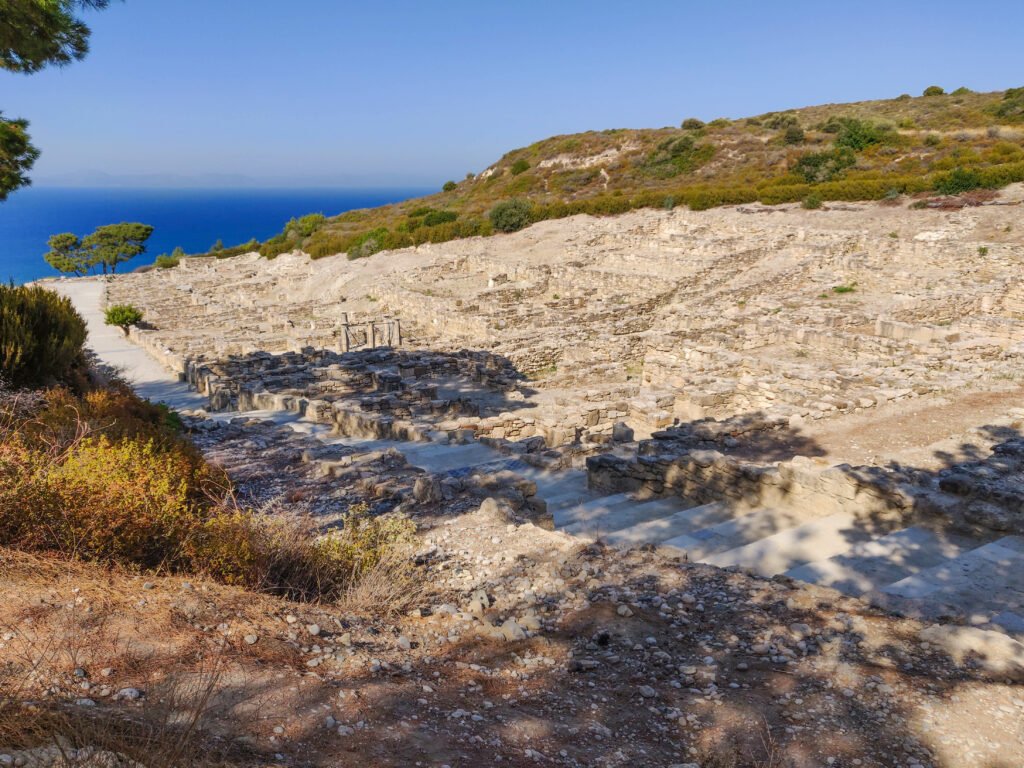On the northwestern coast of the island of Rhodes, lies the ruins of the ancient city of Kamiros Κάμειρος. It is the only existing ancient Greek city in the world that is still entirely intact. Often compared to Pompeii, Kamiros was not destroyed by natural disaster – although it had to be rebuilt twice in 226 and 142 BC after two major earthquakes. The city was gradually abandoned after the founding of Rhodes in 408 BC.
The City of Goddess Kamira
Known in English as ‘Camirus‘, the ancient city-state of Kamiros Κάμειρος was only rediscovered in 1852.
The city was named after Goddess Kamira, one of the fifty daughters of the mythical King Danaus of Libya. The city name actually survives into modern times, as the village close by is known as Kameiros, which was already a hint at the site’s location.
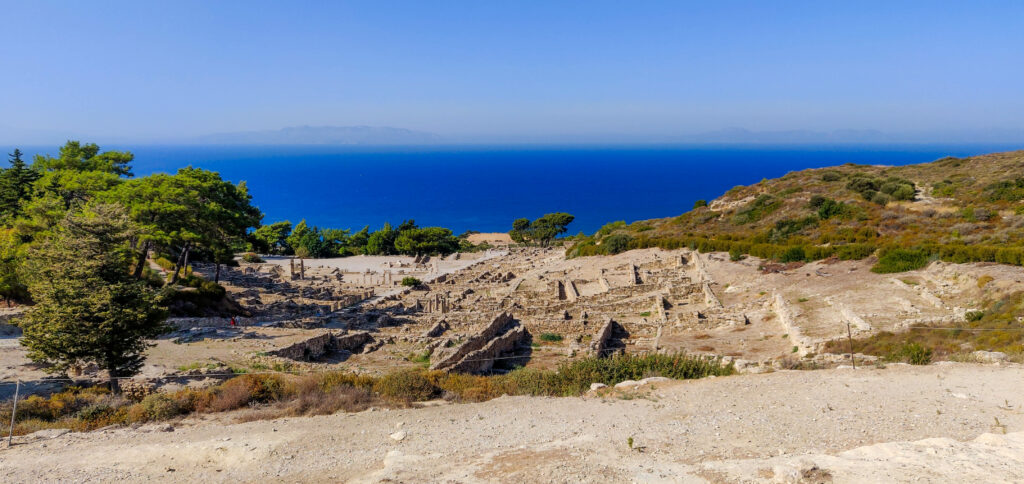
What do we know about Ancient Kamiros?
One of the three city-states on Rhodes and founding cities of the new city of Rhodes, Kamiros was the smallest of them all. The area itself was already inhabited by the Mycenaeans in the 10th century BC, while the city itself was founded by the Dorians. The Doric temple foundations date back to the 8th century BC. Compared to Lindos, which was a large trading port, Kamiros was an agricultural town that focused on producing wine, olive oil and figs.
Soon after the founding of Rhodes City, Kamiros started to decline even though it remained inhabited throughout the Roman and Byzantine periods.
For such a small agrarian city, Kamiros was not unknown in the ancient Greek world:
Peisandros (circa 640 BC), author of a version of Heracleia (Ἡράκλεια), came from Kamiros. His version of the tale – which gave Hercules his lion skin and club – was so popular it earned him a place on the Greek epic canon.
Anaxilas (circa 340 BC) a ‘comic poet’ also hailed from Kamiros. He was one of a dozen comic poets who were of Doric or non-Attic origins who were influential during the Middle Comedy Period.
Kamiros was also the first Rhodian city to mint its own coins in the 6th century BC.
Unfortunately, during the slow decline of Kamiros, the city was further raided by Cassius when it sided with Mark Antony in the civil war between him and Octavian. Around three thousand artworks were stolen then and some of them are now stored in the Vatican.
The Excavations of Ancient Kamiros
Following its complete fall by the end of the Byzantine period, the entire city of Kamiros was covered in forest over the centuries that followed. In the mid-19th century, some ancient graves were first discovered. This led to the first excavations by French and Italian archaeologists under Alfred Biliotti and Auguste Salzmann between 1852 and 1864.
The digs fully exposed the Acropolis and surrounding areas.
Further excavations took place from 1928 until the outbreak of the Second World War by the Italian Mussolini Regime.
If you wonder why only buildings have remained on the current site of ancient Kamiros, it is because the artifacts that were found were all stolen and are now housed in the British Museum, the Louvre and in Rome.
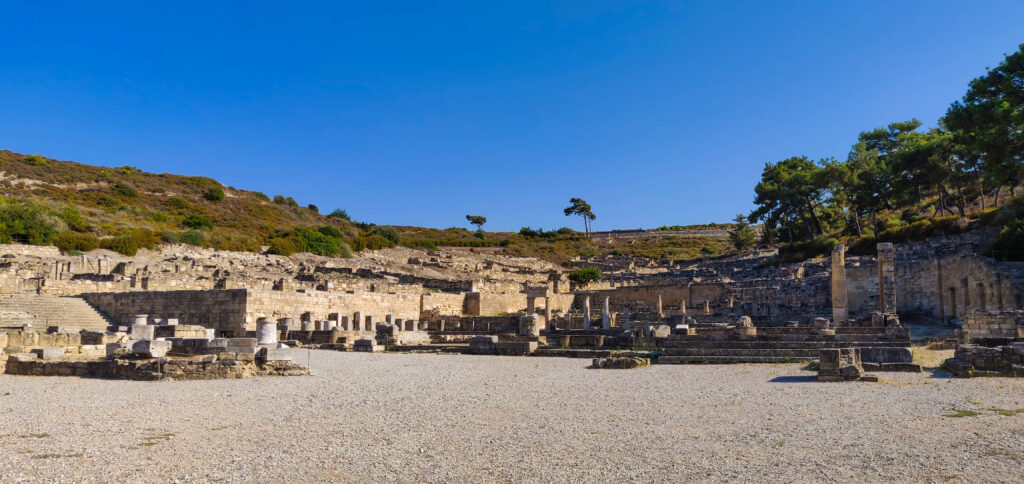
What can you see now in Ancient Kamiros?
Despite it being without its artifacts, ancient Kamiros is today an incredible sight to behold.
It is the only existing intact ancient Greek city that has seen the light of day!
On top of the polis is the acropolis with its covered water reservoir constructed in 6th century BC with a capacity of 600 cubic meters of water – enough for up to 400 families.
Beside the cistern is the Temple complex of Athena Kameiras, that commands a magnificent view over the city and over the sea.
Right below this is the middle terrace with houses and streets, and a main street that cuts through leading up to the temple. Many of the houses date from the Hellenistic and Roman periods.
When you walk along the main street, stop and immerse yourself in the thought that you are walking in a city from 300 BC and you can still see the buildings standing around you!
At the lower terrace is the Agora (market), both a square and a market place. There is also a water point where inhabitants fetched fresh water. Here stood a small altar with a sanctuary, and ramps led to a Stoa (covered portico) measuring 204m long – one of the longest in the ancient world.
Archaeologists found that the city was already equipped with a sewage system.
On the lower terrace, a second temple was also unearthed, which dates back to around 3rd century BC.
How to get there?
Like elsewhere in Rhodes, you can only get to Ancient Kamiros by car. Note that the site closes at 6pm.
Directions on Google Maps
12 Tips on Ravishing Rhodes for the Sophisticated Gentleman
Before you leave, check out my list of 12 tips on ravishing Rhodes for you, the Sophisticated Gentleman.


